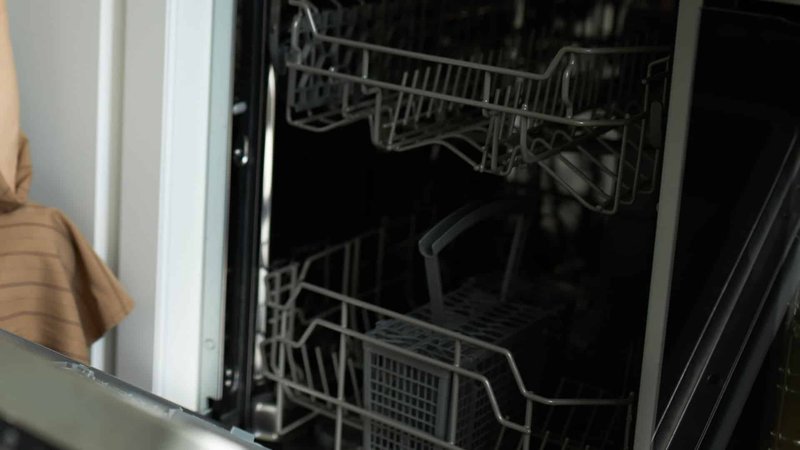
Error codes, like F2, are basically your appliance’s way of letting you know something needs attention. Consider it the dishwasher’s equivalent of raising a little red flag. Instead of ignoring the problem and hoping it goes away, addressing this code promptly can save you time and prevent further hassles in the future. So, let’s dive into the world of dishwashers, specifically Frigidaire models, and learn about the common causes of Error Code F2. In no time, you’ll be equipped with the knowledge to tackle this issue head-on!
What Does Error Code F2 Mean?
When your Frigidaire dishwasher displays Error Code F2, it’s essentially saying there’s a problem with the appliance’s drainage system. Imagine a river that can’t flow freely because of a dam obstructing its path—that’s what’s happening inside your dishwasher. The error suggests water isn’t draining properly, and as a result, your dishwasher might stop mid-cycle, leaving your dishes in soapy limbo.
One common culprit for this error is a clog in the drain hose or the pump. Over time, food particles, soap scum, and grease can build up and create a blockage. Think of it like a clogged kitchen sink; water struggles to find its way out, and soon, you have a mini flood on your hands. Additionally, if the dishwasher’s drain pump is faulty, it won’t be able to push the water out effectively, leading to a puddle of frustration in the bottom of your appliance.
Another reason could be a kinked drain hose. Picture a garden hose that’s looped or twisted, restricting water flow—this can happen in dishwashers, too. When the hose is positioned incorrectly, water can’t drain out as it should, triggering the F2 code. In rare cases, this error might also indicate an issue with the dishwasher’s control board, disrupting the signals sent to the drainage system. Rest assured, identifying these issues is the first step towards a quick fix.
How to Fix Error Code F2: Step by Step
So, you’re staring at the F2 code and wondering what to do next. Let’s break it down into simple steps you can follow. First, always unplug your dishwasher or turn off the power from the breaker to ensure safety. Handling appliances with power on can be risky, so let’s not take any chances, alright?
Next, locate the drain hose, which is usually at the back of the dishwasher. Gently pull your dishwasher out if needed. Check to see if the hose is kinked or twisted; if it is, straighten it out carefully. This might be all it takes to solve the problem. Now, if the hose looks fine but the F2 error persists, it’s time to dive deeper. Remove the drain hose and check for any blockages—this could be bits of food or soap residue. Running water through the hose can help flush out these obstructions.
If the hose isn’t the issue, you’ll need to inspect the drain pump. This component is usually found at the bottom of the dishwasher. Once you’ve located it, check for any debris that might be causing a blockage. You might need to remove a few screws to access it, but don’t worry; it’s like solving a jigsaw puzzle—take your time and keep track of each piece. Once cleared, reassemble everything, plug the dishwasher back in, and run a test cycle. Fingers crossed! If all goes well, the F2 error should be a thing of the past.
When to Call a Professional
Sometimes, despite your best efforts, the F2 error might persist, stubbornly flashing at you like a blinking neon sign. Don’t feel defeated—this is when it’s wise to call in a professional. Just like you’d call a plumber for a tricky leak or a mechanic for a complex car issue, an appliance technician can diagnose deeper issues that might be beyond a simple DIY fix.
Why call a professional? Well, if the issue lies with the control board or any intricate electrical component, trying to fix it yourself without the right skills could do more harm than good. These experts have the tools and the know-how to safely and efficiently resolve more complex problems. It’s kind of like having a coach in your corner—sometimes, a little guidance from someone with experience can make all the difference.
While waiting for a professional, consider taking preventative measures for the future. Regularly check and clean your dishwasher’s filters, and avoid overloading it with dishes. Think of it as a workout routine for your dishwasher—keep it in good shape, and it will perform like a champ. The next time you load it up, you can do so with confidence, knowing you’ve taken steps to avoid the dreaded F2.
Preventative Maintenance Tips
Prevention is always better than cure, especially when it comes to maintaining your dishwasher. A little care and attention can go a long way in keeping Error Code F2 at bay. One of the simplest things you can do is to regularly check your drain hose for kinks or potential blockages. Just like you’d check your car tires for air, keeping an eye on your dishwasher’s hoses ensures smooth sailing.
Another handy tip is to clean your dishwasher filter regularly. Over time, bits of food and gunk can accumulate and cause clogs, leading to drainage issues. Think of the filter as the lungs of your dishwasher—it needs to be free of debris to function properly. A quick rinse under running water every few weeks can make a world of difference.
Lastly, run a vinegar rinse cycle every month or two. Vinegar acts like a magic elixir, breaking down grease and soap scum that might be lurking in the depths of your dishwasher. Simply place a cup of vinegar in a dishwasher-safe container on the top rack and run a hot water cycle. This easy maintenance trick can help keep your dishwasher sparkling clean and error-free, allowing you to enjoy spotless dishes without the drama of error codes.